Architecture Home Styles
How Long Do 30-Year Architectural Shingles Really Last: A Maintenance Guide
Solve the mystery of 30-year architectural shingles' lifespan and discover crucial maintenance tips to ensure their longevity.
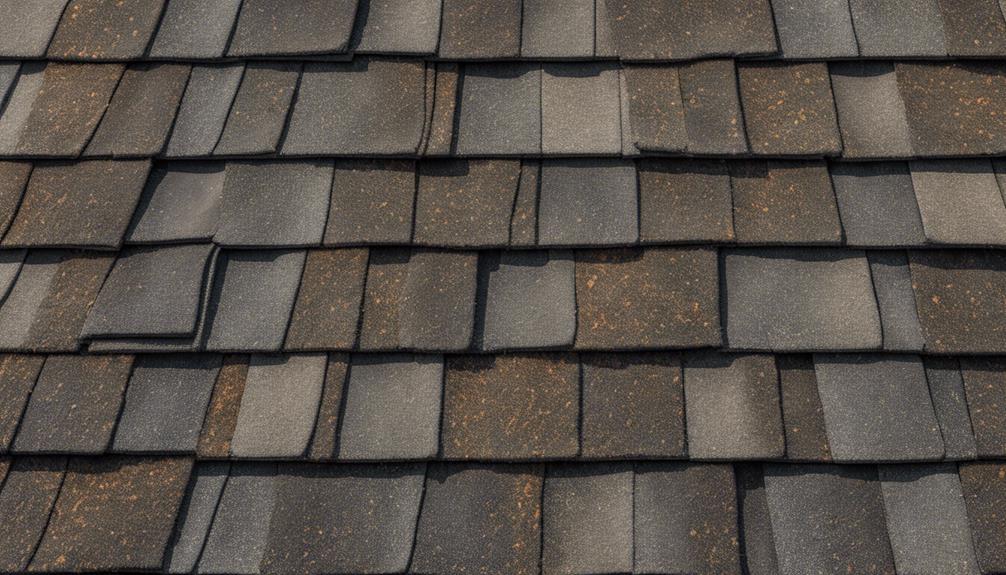
When it comes to 30-year architectural shingles, there's a common misconception about their actual lifespan that many homeowners might not be aware of.
Have you ever wondered if these shingles truly stand the test of time as advertised?
Let's uncover the reality behind the longevity of these roofing materials and explore essential maintenance practices that can make a significant difference in preserving their durability.
Key Takeaways
- Skilled installation and proper ventilation enhance architectural shingle longevity.
- Regular inspections and prompt repairs prolong shingle lifespan.
- Signs like missing or cracked shingles indicate the need for replacement.
- Effective maintenance practices like debris removal and tree trimming extend shingle performance.
Lifespan of 30-Year Architectural Shingles
In real-world conditions, 30-year architectural shingles typically last approximately 22-25 years. The lifespan of these shingles is heavily influenced by factors such as installation quality, ventilation, weather conditions, and maintenance practices. For optimal longevity, it's crucial to ensure that the shingles are installed correctly by a skilled contractor. Proper installation not only enhances the durability of the shingles but also contributes to maintaining their structural integrity over time.
Moreover, adequate ventilation plays a significant role in extending the lifespan of 30-year architectural shingles. Good ventilation helps regulate temperature and moisture levels in the attic, preventing issues like mold growth and premature deterioration of the shingles. Regular maintenance, including inspections and timely repairs, is also essential for prolonging the life of these shingles. By addressing any issues promptly, homeowners can prevent minor problems from escalating and causing extensive damage to the roof. Understanding these key factors is essential for maximizing the lifespan of 30-year architectural shingles in real-world conditions.
Factors Affecting Shingle Longevity

Factors affecting the longevity of architectural shingles, including installation quality, ventilation, weather conditions, and maintenance practices, play crucial roles in determining the lifespan of these roofing materials. Proper installation by a skilled contractor is essential for ensuring that the shingles are placed correctly, preventing premature wear and damage. Adequate ventilation helps regulate temperature and moisture levels, reducing the risk of mold growth and shingle deterioration. Weather conditions, such as extreme heat, cold, or storms, can impact the shingles differently based on their direction and exposure. Regular maintenance, like cleaning the roof, promptly repairing damaged shingles, and trimming overgrown branches, can significantly extend the shingle lifespan.
To protect and prolong the durability of architectural shingles, homeowners should conduct regular inspections to identify signs of wear or damage early on. By implementing effective maintenance strategies and addressing issues promptly, individuals can maximize the lifespan of their shingles and ensure long-term roof protection.
Extending Architectural Shingle Lifespan
Regular maintenance practices significantly impact the lifespan of 30-year architectural shingles. To extend the longevity of architectural shingles, implementing regular inspections, roof repairs, proper ventilation, and protection measures is crucial. Here is a breakdown of key practices to help maintain and extend the lifespan of architectural shingles effectively:
| Maintenance Tips | Description | Importance |
|---|---|---|
| Regular Inspections | Scheduled assessments for damage detection | Ensures early repairs |
| Roof Repairs | Prompt fixing of damaged shingles | Prevents further issues |
| Ventilation | Proper airflow to regulate temperature and moisture | Enhances durability |
| Tree Branches | Trimming to prevent damage from falling debris | Protects shingles |
Signs for Replacing Architectural Shingles
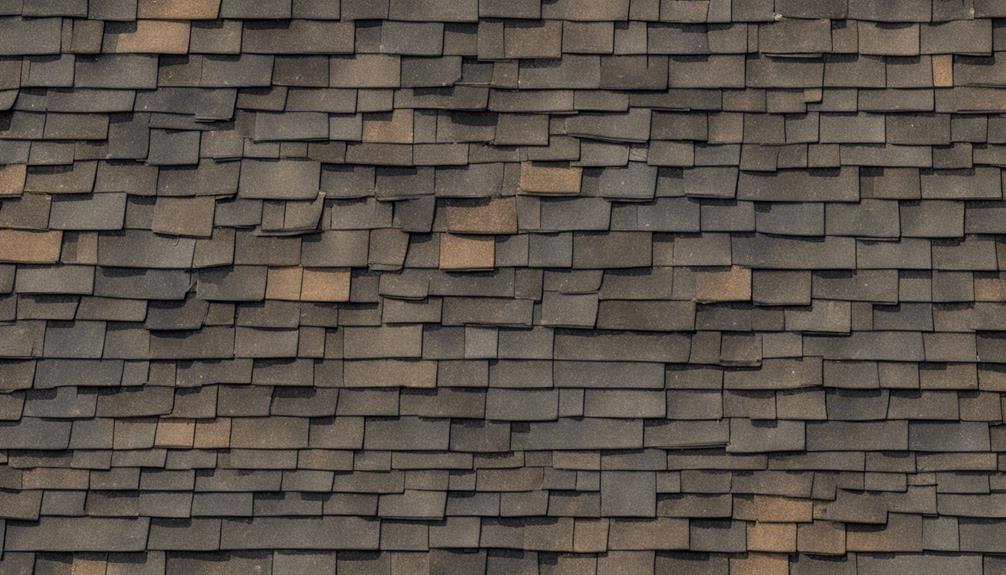
To identify when replacement is necessary for architectural shingles, attentive observation of key indicators like missing, cracked, or curled shingles is essential. When assessing the state of your roof, keep an eye out for the following signs that may indicate it's time for a roof replacement:
- Missing Shingles: Any gaps in your asphalt shingle pattern can leave your roof vulnerable to leaks and further damage.
- Cracked Shingles: Cracks compromise the structural integrity of the shingles, making them less effective at protecting your roof.
- Curled Shingles: Shingles that are curling upwards are a clear sign of aging and wear, suggesting they're no longer providing adequate protection.
- Worn Appearance: If your shingles appear visibly worn or faded, it may be time to consider a replacement to maintain the integrity of your roof.
- Leaks: Water entering your home through the roof is a clear indication of damage that may require immediate attention to prevent further issues.
Maintenance Tips for Architectural Shingles
For optimal longevity and performance of your architectural shingles, meticulous attention to regular maintenance tasks is crucial. Regular inspections play a pivotal role in identifying any issues early on, allowing for prompt repairs that can prevent further damage and extend the lifespan of your 30-year architectural shingles.
Ensuring that your shingle roof is free of debris and moss buildup is essential in maintaining its structural integrity. Regular debris removal not only improves the aesthetic appeal of your roof but also prevents potential water damage. Additionally, trimming overgrown tree branches near your roof is vital to preventing any physical damage to the architectural shingles.
Frequently Asked Questions
How Long Do 30 Year Architectural Shingles Really Last?
They typically last around 22-25 years, influenced by factors like installation quality, ventilation, and maintenance. Proper installation and ventilation play vital roles in shingle longevity.
A skilled contractor and regular maintenance can extend their lifespan. Regular inspections and maintenance are crucial in maximizing the life of 30-year architectural shingles.
How Often Should Architectural Shingles Be Replaced?
Architectural shingles should be replaced roughly every 22-25 years due to wear and tear. Factors like weather, maintenance, and installation quality impact their lifespan.
Regular inspections and maintenance can help determine when replacement is needed, ensuring your roof remains in good condition.
Are 30 Year Architectural Shingles Impact Resistant?
Yes, 30-year architectural shingles can vary in impact resistance.
While some standard options lack this feature, certain manufacturers offer impact-resistant versions or coatings.
These enhanced shingles provide increased durability against hail and debris, making them ideal for regions prone to severe weather.
Homeowners should consider investing in impact-resistant architectural shingles for added protection and longevity.
How Long Are Architectural Shingles Guaranteed For?
We guarantee that architectural shingles last 30 years. This assurance reflects the quality and durability of these shingles, ensuring their performance over time.
Manufacturers support this longevity with a 30-year warranty, offering homeowners peace of mind. Trust in the manufacturer's promise for the lifespan of your architectural shingles.
Conclusion
In conclusion, it's crucial to understand that while 30-year architectural shingles may not always live up to their advertised lifespan, proper maintenance and care can significantly extend their durability.
By staying vigilant and proactive in inspecting, repairing, and maintaining these roofing materials, homeowners can ensure that their investment lasts longer than expected.
Remember, a stitch in time saves nine – so don't wait until it's too late to protect your home from the elements.
- About the Author
- Latest Posts
Introducing Ron, the home decor aficionado at ByRetreat, whose passion for creating beautiful and inviting spaces is at the heart of his work. With his deep knowledge of home decor and his innate sense of style, Ron brings a wealth of expertise and a keen eye for detail to the ByRetreat team.
Ron’s love for home decor goes beyond aesthetics; he understands that our surroundings play a significant role in our overall well-being and productivity. With this in mind, Ron is dedicated to transforming remote workspaces into havens of comfort, functionality, and beauty.
Architecture Home Styles
How to Determine If Contemporary Houses Are Expensive
Journey through the complexities of contemporary housing costs to unravel the true value behind these luxurious abodes.

As we navigate the realm of contemporary housing costs, one cannot help but ponder: are these sleek and modern abodes truly worth the hefty price tags they command?
The allure of clean lines and cutting-edge design often comes hand in hand with a significant financial investment. But how does one discern if the expense is justified beyond mere aesthetics?
Let's explore the intricate web of factors that determine the price of contemporary houses, shedding light on what makes them a luxurious yet potentially worthwhile investment.
Key Takeaways
- Unique architectural elements increase contemporary house pricing significantly.
- Proximity to essential facilities impacts the value of modern homes.
- Market trends and demand for modern aesthetics drive up contemporary house prices.
- Quality expectations and construction costs contribute to the higher expense of contemporary houses.
Factors Affecting Contemporary House Pricing
Factors impacting the pricing of contemporary houses encompass a range of elements that contribute to their premium cost. When it comes to modern homes, one key aspect that influences pricing is the floor plan design. Modern houses often feature open floor plans that prioritize spaciousness and connectivity between living spaces. This design trend not only enhances the overall aesthetic appeal but also increases the perceived value of the property, leading to higher pricing per square foot.
Additionally, the integration of innovative and cutting-edge architectural elements in modern homes plays a significant role in determining their pricing. Features such as smart home technology, energy-efficient appliances, and sustainable materials contribute to the overall cost of the property. Homebuyers are willing to pay a premium for these modern conveniences and eco-friendly options, further driving up the prices of contemporary houses.
In comparison to traditional homes, modern houses require meticulous attention to detail in their design and construction, resulting in higher overall costs. The combination of floor plans that prioritize open spaces and the inclusion of modern amenities elevates the desirability and pricing of contemporary homes in the real estate market.
Evaluating Architectural Complexity
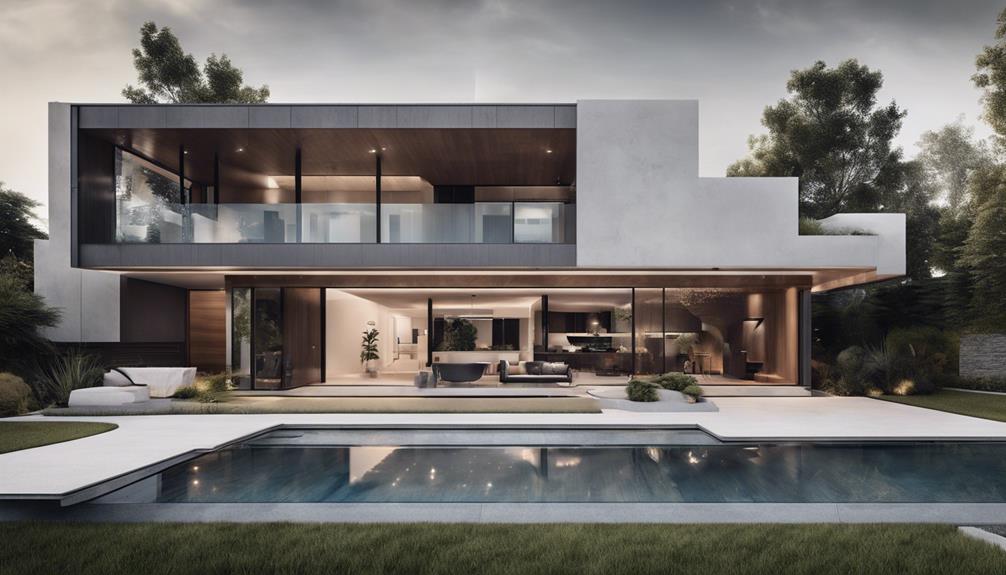
The architectural complexity of contemporary houses significantly influences their pricing, reflecting the intricate structural elements and premium design features involved in their construction. Contemporary homes often incorporate steel beams and custom windows to bring a modern aesthetic. These unique elements require precision construction and meticulous detailing, which contribute to the higher costs associated with these properties.
In contrast to traditional design, contemporary houses may lack ornate trimwork and detailed ornamentation but make up for it with cutting-edge design elements and quality expectations. Factors such as detailed trimwork, unique lighting fixtures, and the absence of traditional ornamentation all add to the expense of contemporary houses.
Due to these premium pricing factors, modern homes with specific architectural features command a higher price per square foot compared to their traditional counterparts. The innovative structural design and premium materials used in contemporary houses justify their higher cost and appeal to those seeking a unique and modern living experience.
Considering Location and Amenities
When considering location and amenities in relation to contemporary houses, the proximity to essential facilities plays a crucial role in determining their overall cost.
- Proximity to Amenities: The distance to schools, shopping centers, and public transportation can significantly impact the price of contemporary homes.
- Quality of Schools: The reputation and quality of schools in the neighborhood can influence the value of contemporary houses.
- Crime Rates: The safety of the area, as reflected in crime rates, may affect the desirability and value of contemporary properties.
- Future Development: Awareness of future development plans in the neighborhood is crucial as it can impact the appreciation potential of contemporary homes.
Considering these factors alongside the floor plan and the current state of the real estate market is essential in accurately assessing the cost of contemporary properties. By evaluating these elements objectively, potential buyers can make informed decisions about the value and desirability of a modern home.
Market Trends and Real Estate Dynamics
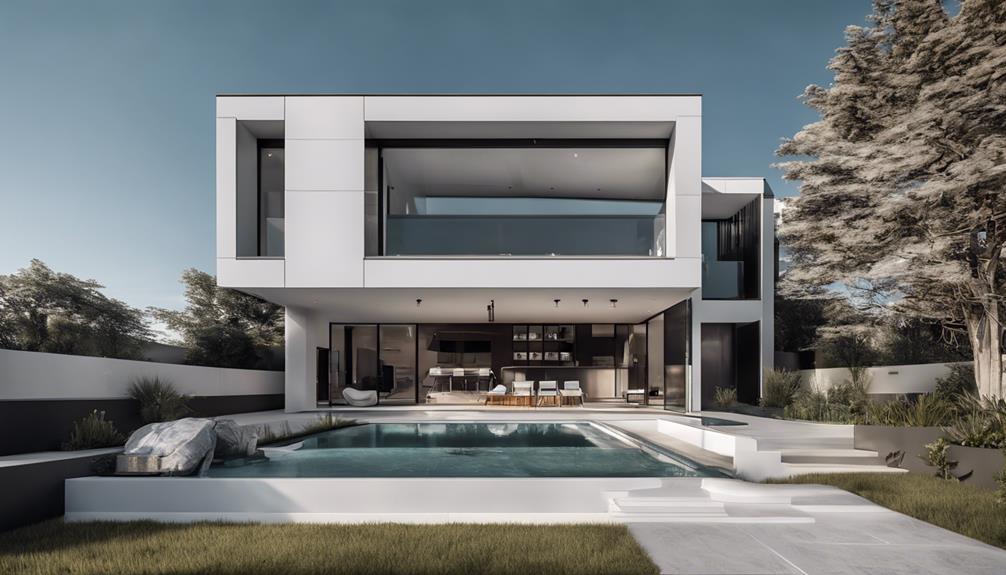
Considering the current real estate landscape, market trends play a pivotal role in shaping the pricing dynamics of contemporary houses, particularly in response to the growing demand for modern aesthetics. Modern homes often command a premium price per square foot, reflecting the willingness of buyers to pay more for sleek design elements and innovative floor plans. Builders and architects capitalize on this trend, incorporating cutting-edge features that drive up the cost of these homes. Market trends indicate a strong preference for modern homes, leading to higher pricing compared to traditional houses. The allure of contemporary design, coupled with quality expectations, contributes to the higher price tags attached to these properties. In the table below, we highlight the key factors influencing the pricing dynamics of contemporary houses in today's real estate market:
| Factors | Impact |
|---|---|
| Modern Aesthetics | Higher demand, premium pricing |
| Quality Expectations | Influence on pricing trends |
| Market Preference | Strong demand for modern homes |
Tips for Assessing House Value
To properly evaluate the value of a house, one must carefully analyze its design elements, construction costs, market trends, and overall quality expectations. When assessing the value of homes, consider the following:
- Design Elements: Premium pricing factors like detailed trimwork and unique lighting can significantly impact the overall cost of contemporary homes. These elements add uniqueness and style, often increasing the perceived value of the property.
- Construction Costs: Modern homes are typically more expensive to build, especially with options like prefabricated houses such as Timbercab from FabCabs, which can cost around $250 per square foot. Understanding these costs is crucial in determining the overall value of a home.
- Market Trends: High demand for modern homes can lead to a premium price per square foot in certain markets. Being aware of these trends can help in gauging the value of contemporary homes in specific locations.
- Quality Expectations: Evaluating the combination of design elements, construction costs, and market trends against quality expectations is essential in determining why contemporary houses are often more expensive than their traditional counterparts. Quality plays a significant role in the perceived value and desirability of homes in the market.
Frequently Asked Questions
Are Contemporary Homes More Expensive?
Yes, contemporary homes often come with a higher price tag due to their unique design elements and quality standards. Factors like detailed trimwork and distinctive lighting can drive up costs.
Prefabricated modern options like Timbercab or Karoleena mods can also be pricier to construct.
Market demand for modern homes further elevates their price per square foot in certain areas.
How Do You Know if a House Is Contemporary?
To identify a contemporary house, we examine its design elements. Look for clean lines, large windows, and open floor plans. Materials like steel, glass, and concrete are telltale signs. Minimalist aesthetics, asymmetrical layouts, and flat roofs are distinctive features.
Contemporary homes prioritize functionality, simplicity, and innovative design. The use of custom, high-end materials and unique architectural elements distinguishes contemporary houses from traditional ones.
What Is the Difference Between a Modern House and a Contemporary House?
When comparing modern and contemporary houses, the distinction lies in their design eras. Modern homes embody the early to mid-20th century style with specific elements like flat roofs and open floor plans.
In contrast, contemporary houses represent current design trends, focusing on sleek lines, open spaces, and cutting-edge technology. While modern houses have a defined style, contemporary homes evolve with the latest preferences, potentially leading to higher construction costs due to custom features and high-end materials.
What Is the Most Cost Effective House Shape?
When determining the most cost-effective house shape, we consider modern homes with their simple, formal geometries. These designs often reduce construction costs due to their straightforward requirements.
Builders appreciate the efficiency of modern shapes, which can help keep expenses in check. By opting for modern house shapes, one can potentially save on labor and material costs, making them a practical choice for those looking to maximize affordability in home construction.
Conclusion
In conclusion, determining the expense of contemporary houses involves a careful consideration of various factors.
By evaluating architectural complexity, location, amenities, and market trends, buyers can make informed decisions when assessing house value.
Remember, in the world of real estate, the cost of modern aesthetics often comes with a price tag.
Just like a rose with thorns, contemporary homes may be beautiful but require careful handling to fully appreciate their worth.
- About the Author
- Latest Posts
Introducing Ron, the home decor aficionado at ByRetreat, whose passion for creating beautiful and inviting spaces is at the heart of his work. With his deep knowledge of home decor and his innate sense of style, Ron brings a wealth of expertise and a keen eye for detail to the ByRetreat team.
Ron’s love for home decor goes beyond aesthetics; he understands that our surroundings play a significant role in our overall well-being and productivity. With this in mind, Ron is dedicated to transforming remote workspaces into havens of comfort, functionality, and beauty.
Architecture Home Styles
Types of Shingles That Last the Longest: A How-To Guide
Journey through the top shingle choices for lasting roofs, uncovering the key to durability and longevity.

As we navigate the vast landscape of roofing options, seeking the shingles that stand the test of time can feel like searching for a needle in a haystack. But fear not, for in our guide on 'Types of Shingles That Last the Longest,' we shed light on the most enduring choices.
From the robust luxury asphalt shingles to the elegant slate counterparts, each option has its own tale to tell when it comes to longevity. So, are you prepared to secure your roof's future with shingles that go the distance?
Key Takeaways
- Luxury asphalt shingles offer up to 40 years of durability and elegance.
- Dimensional asphalt shingles provide 20-30 years of weather-resistant performance.
- Designer shingles ensure long-lasting, luxurious curb appeal with top-notch materials.
- Choosing the right roofing material is crucial; luxury asphalt shingles mimic high-end aesthetics at $4 to $7 per square foot.
Benefits of Luxury Asphalt Shingles
Luxury asphalt shingles offer a premium solution for homeowners seeking to enhance their property's aesthetics and durability. These premium asphalt shingles provide high curb appeal, mimicking the elegant look of slate tiles while delivering long-lasting performance. Despite the initial cost of around $7.50 per square foot for a complex roof, the material warranty for luxury shingles typically includes a 30-year prorated warranty, which can be extended to 50 years with specific components.
While these shingles excel in durability and aesthetics, it's essential to consider budget constraints when opting for them. Professional installation is crucial to maximize the lifespan of luxury asphalt shingles, ensuring they perform at their best for many years to come. Therefore, homeowners looking for a roofing solution that combines beauty and resilience should seriously consider investing in luxury asphalt shingles.
Durability of Three-Tab Shingles

When considering the durability of three-tab shingles, it's essential to factor in their average lifespan of 10-15 years before requiring replacement. These shingles offer a cost-effective roofing solution, making them a popular choice for many homeowners. Here are three key points to understand the durability of three-tab shingles:
- Uniform Look: Three-tab shingles provide a sleek and uniform appearance to the roof due to their simple design. This consistent look can enhance the overall curb appeal of the property.
- Lightweight: Compared to architectural or luxury shingles, three-tab shingles are lighter in weight. This characteristic makes them easier to handle during installation and puts less stress on the roof structure.
- Lifespan Variability: The lifespan of three-tab shingles can vary depending on factors such as climate conditions and the level of maintenance. Proper care and regular inspections can help extend the lifespan of these shingles beyond the average 10-15 years.
Longevity of Dimensional Asphalt Shingles
What factors contribute to the extended longevity of dimensional asphalt shingles compared to three-tab shingles?
Dimensional asphalt shingles, also known as architectural shingles, are among the longest lasting asphalt roofing materials available. Their superior durability can be attributed to their construction. These premium asphalt shingles are built with multiple layers and increased thickness, providing enhanced protection against the elements and prolonging their lifespan to typically 20-30 years, surpassing traditional 3-tab shingles.
The high curb appeal of dimensional shingles, often mimicking the look of cedar shakes, adds a touch of elegance to any home. Moreover, their ability to withstand various weather conditions further solidifies their place as a top choice for long-lasting roofs.
When considering roof installation, opting for dimensional asphalt shingles not only ensures longevity but also comes with the added benefit of a non-prorated warranty, offering peace of mind for homeowners seeking a durable and aesthetically pleasing roofing solution.
Features of Designer Shingles
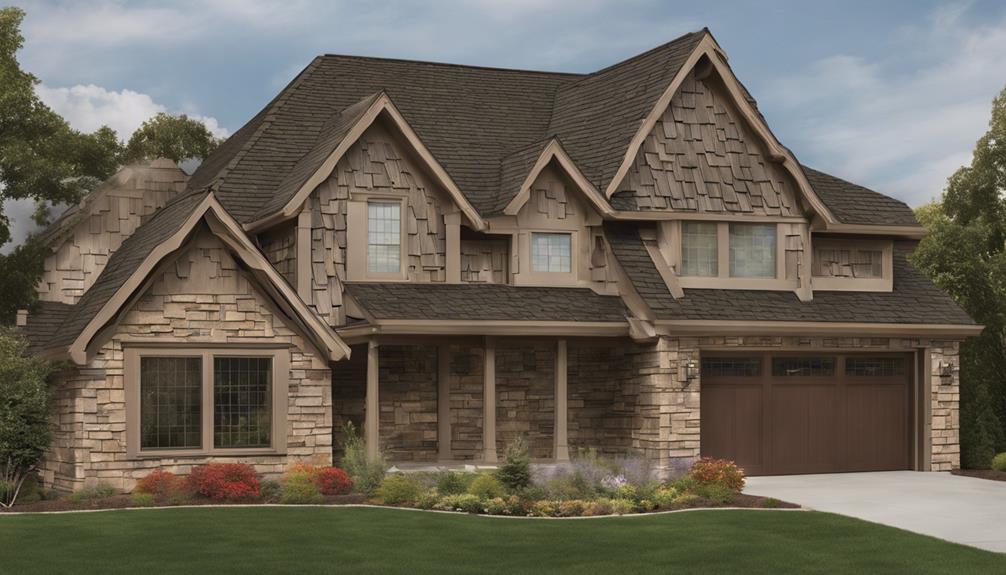
Dimensional asphalt shingles, renowned for their exceptional longevity and durability, set a high standard in the roofing industry, but now let's explore the intricate features that define designer shingles. When it comes to premium asphalt shingles, designer shingles stand out for their high curb appeal, long-lasting performance, and luxurious appearance. Here are three key features that make designer shingles a popular choice for homeowners seeking durability and style:
- High-Quality Materials: Designer shingles are crafted from top-notch materials that ensure their durability and weather resistance. These high-quality components contribute to the long lifespan of the shingles, protecting your home for years to come.
- Variety of Styles and Colors: With designer shingles, homeowners have a wide range of styles and colors to choose from, allowing them to personalize their roofs according to their preferences and architectural aesthetics.
- Professional Installation: Installing designer shingles requires expertise to guarantee proper alignment and maximize the roof's longevity. Professional installation ensures that the shingles are securely placed, enhancing their durability and performance.
Choosing the Right Roofing Material
To select the most suitable roofing material, we meticulously analyze the specific requirements of the project and consider various factors such as durability, aesthetics, and cost-effectiveness.
When it comes to longevity and high-quality roofing materials, luxury asphalt shingles stand out. These types of shingles can last up to 40 years when properly installed and maintained. While metal roofs offer even longer lifespans, luxury asphalt shingles provide a durable and traditional option that combines longevity with curb appeal. The aesthetic appeal of luxury asphalt shingles is notable, as they mimic the look of higher-end materials like slate, enhancing the overall appearance of the property.
In terms of pricing, luxury asphalt shingles typically fall within the range of $4 to $7 per square foot, positioning them as a premium roofing option. Additionally, these shingles often come with comprehensive warranty options that cover both workmanship and materials, offering added protection against any unforeseen issues.
When considering extreme weather conditions and the overall performance of an asphalt shingle roof, opting for high-quality luxury asphalt shingles can be a wise investment in both durability and aesthetics.
Frequently Asked Questions
Which Type of Shingle Has the Longest Life Expectancy?
Luxury asphalt shingles boast an impressive life expectancy, typically lasting up to 30 years.
Metal shingles offer even greater longevity, with a lifespan ranging from 40 to 70 years.
Slate shingles are renowned for durability, often surpassing 100 years with proper care.
Clay tiles also stand out, lasting 50+ years when well-maintained.
Impact-resistant shingles excel in harsh weather conditions, providing extended durability for roofs.
What Shingles Last 40 Years?
We've found that metal shingles, luxury asphalt shingles, clay tiles, and impact-resistant shingles can all last up to 40 years with proper care. Each material offers unique benefits in terms of durability and longevity.
By ensuring correct installation, regular maintenance, and adequate ventilation, these shingles can reach their full potential lifespan.
It's essential to choose the right type of shingle based on your specific needs and climate conditions for optimal performance.
What Are 30 Year Lifetime Shingles?
We're talking about 30 year lifetime shingles, which are top-tier asphalt shingles known for their exceptional durability and longevity. These shingles can last up to 30 years when properly installed and maintained.
They're designed to resemble slate tiles, enhancing a home's visual appeal. While pricier than standard asphalt shingles, the 30 year lifetime shingles offer superior durability and aesthetic benefits, making them a worthwhile investment for a long-lasting roof.
Do Thicker Shingles Last Longer?
Yes, thicker shingles do last longer. Their increased durability and resistance to wear and tear make them more resilient to harsh weather conditions like wind, rain, and hail.
Thicker shingles have more layers of material, providing added strength and protection. While they may have a higher upfront cost, their longevity can lead to cost savings in the long run by reducing the need for frequent replacements.
Conclusion
In conclusion, when it comes to selecting shingles that last the longest, it's essential to consider luxury asphalt shingles for their unparalleled durability.
Remember, your roof isn't just a cover but a statement of longevity and quality.
So, choose wisely, and let your roof stand the test of time while showcasing the elegance and durability of luxury asphalt shingles.
Happy roofing!
- About the Author
- Latest Posts
Introducing Ron, the home decor aficionado at ByRetreat, whose passion for creating beautiful and inviting spaces is at the heart of his work. With his deep knowledge of home decor and his innate sense of style, Ron brings a wealth of expertise and a keen eye for detail to the ByRetreat team.
Ron’s love for home decor goes beyond aesthetics; he understands that our surroundings play a significant role in our overall well-being and productivity. With this in mind, Ron is dedicated to transforming remote workspaces into havens of comfort, functionality, and beauty.
Architecture Home Styles
The Easiest Flooring to Keep Clean: A How-To Guide
Get ready to uncover the secrets of effortlessly clean flooring with the ultimate how-to guide that will revolutionize your cleaning routine.

When it comes to maintaining clean flooring, we often find ourselves searching for the path of least resistance. Imagine having floors that not only look pristine but also require minimal effort to keep that way.
In our upcoming discussion, we'll explore the secrets behind achieving this elusive goal and uncover the simplest ways to ensure your floors stay immaculate with ease. Let's embark on this journey to discover the ultimate guide to effortlessly clean flooring.
Key Takeaways
- Choose low-maintenance laminate or vinyl floors for easy cleaning and durability.
- Opt for ceramic tiles or polished concrete in high-traffic areas for effortless upkeep.
- Maintain hardwood floors with daily dusting, occasional mopping, and protective measures.
- Regular cleaning, sealing, and preventive measures are key to keeping floors clean and elegant.
Benefits of Low-Maintenance Laminate Flooring
Low-maintenance laminate flooring stands out as a practical and stylish choice for households seeking durability and ease of upkeep. With its scratch-resistant properties and protective wear layer, laminate flooring reduces the need for constant maintenance and refinishing, making it a cost-effective option for busy homes. Cleaning laminate flooring is a breeze, requiring only regular sweeping and occasional mopping to keep it looking pristine.
One of the standout features of laminate flooring is its wide range of styles and designs, offering homeowners the opportunity to choose options that mimic the luxurious look of natural wood or stone without the associated maintenance requirements. Additionally, high-quality laminate flooring often comes with a generous 20-year warranty, providing peace of mind and ensuring the longevity and durability of your floors for years to come.
When looking for a flooring option that combines low maintenance with style and longevity, laminate flooring proves to be an excellent choice for modern households.
Easy Cleaning Tips for Vinyl Floors
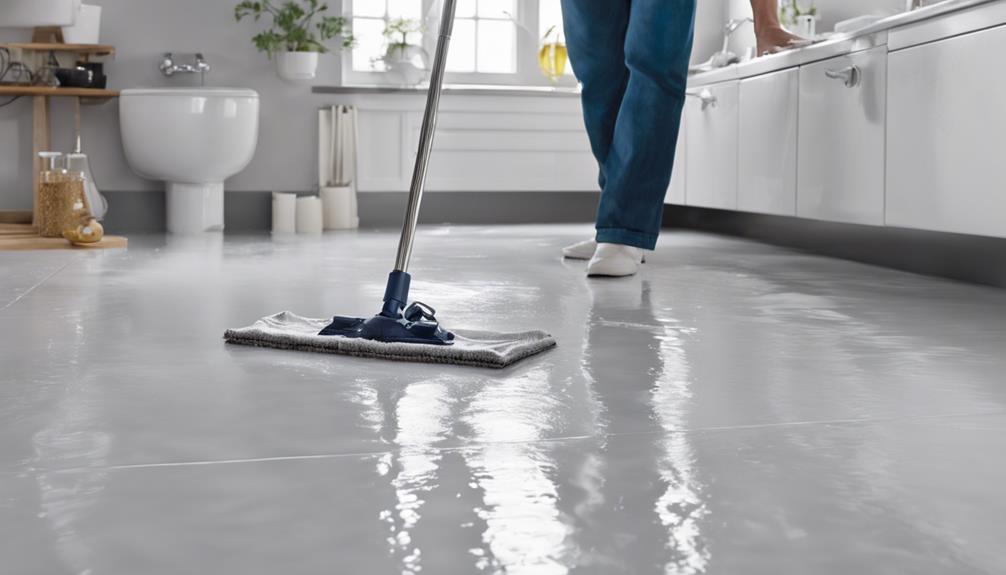
When caring for vinyl floors, regular sweeping and mopping are essential maintenance tasks to uphold their cleanliness and durability. Vinyl floors are easy to clean due to their protective layer, which helps resist stains and spills, making it a convenient choice for busy households. With a wide range of styles and designs available, including options that mimic the look of hardwood or tile, vinyl flooring offers both practicality and aesthetic appeal.
To keep your vinyl floors looking their best, start by sweeping or vacuuming regularly to remove dirt and debris that can scratch the surface. When mopping, use a mild cleaner and avoid excessive water, as vinyl is susceptible to water damage. For tougher stains, a mixture of water and vinegar can be effective. It's important to wipe up spills promptly to prevent staining and maintain the floor's finish.
Keeping Ceramic Tiles Spotless
Regularly sweeping and mopping ceramic tiles maintains their spotless appearance and durability. Ceramic tiles are water-resistant and easy to clean, making them an ideal choice for high-traffic areas like bathrooms and kitchens. To keep ceramic tiles looking their best, a simple routine of sweeping to remove loose dirt and debris, followed by mopping with a gentle cleaning solution, is all that's needed. This regular maintenance prevents dirt and grime from building up, preserving the stylish finish of the tiles.
In case of deep grout stains, a more thorough cleaning approach may be required, but for the most part, ceramic tiles are hassle-free to maintain. Their sleek and modern appearance adds a touch of elegance to any space, making them a popular flooring option for those seeking both practicality and style. By staying on top of regular cleaning tasks, ceramic tiles can remain spotless and beautiful for years to come.
Hassle-Free Maintenance for Polished Concrete
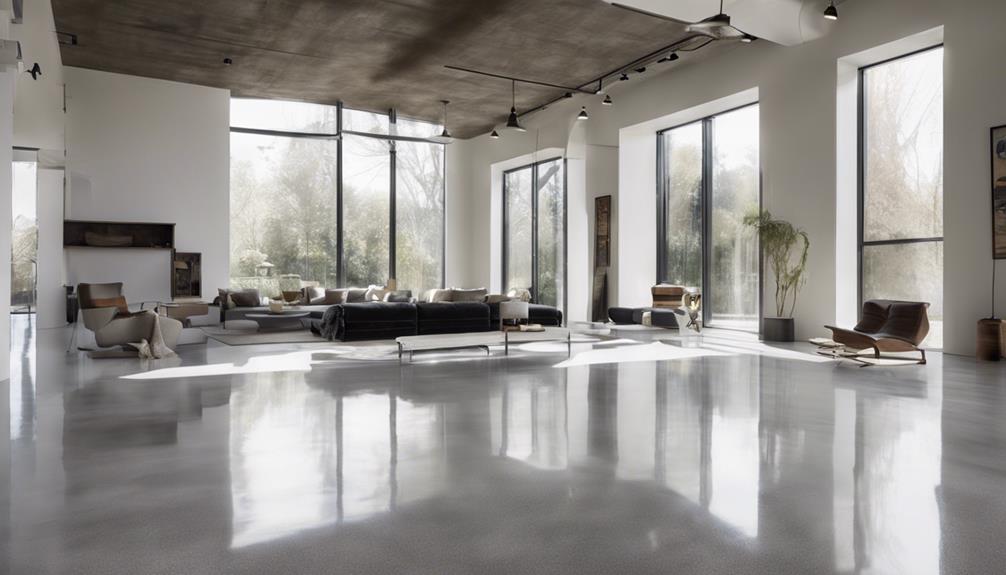
To effortlessly maintain the sleek appearance of polished concrete floors, a simple routine of sweeping and mopping regularly is all that's required. Here are some hassle-free maintenance tips for polished concrete floors:
- Apply Sealant: To enhance stain resistance and maintain a lasting shine, consider applying a quality floor sealant to your polished concrete floors.
- Enjoy the Reflective Surface: The reflective nature of polished concrete not only brightens up your space but also adds a touch of modern elegance while standing up to heavy foot traffic effortlessly.
- Embrace Durability: Polished concrete floors aren't only aesthetically pleasing but also incredibly durable, making them suitable for various settings where durability is essential.
- Minimal Maintenance: With their easy-to-clean nature and minimal maintenance requirements, polished concrete floors offer a hassle-free flooring option for those seeking an affordable yet sophisticated solution.
Maintaining polished concrete floors can be a breeze with these simple steps, ensuring your floors always look their best even in high-traffic areas.
Simple Tricks for Tidying Hardwood Floors
Maintaining hardwood floors is essential for preserving their beauty and longevity, requiring consistent care and attention to detail.
To keep hardwood floors tidy, start by using a dust mop daily to prevent dirt buildup. This simple step can help preserve the natural shine of the wood surface.
For a deeper clean, vacuum high-traffic areas with a hardwood setting to remove debris from hard-to-reach spots without causing scratches. When it's time for a more thorough cleaning, opt for a damp mop paired with a hardwood cleaner to maintain the floor's pristine condition.
Additionally, consider using a wood floor polish to address any scratches and enhance the overall luster of the hardwood floors.
To further protect your hardwood floors, place rugs or mats in high-traffic areas to minimize wear and tear. By incorporating these easy tricks into your maintenance routine, you can ensure that your hardwood floors remain clean and beautiful for years to come.
Frequently Asked Questions
What Is the Easiest Type of Flooring to Keep Clean?
Luxury vinyl flooring is the easiest type to keep clean. Its durability and stain resistance make it a low-maintenance option. Simple sweeping and mopping suffice for daily upkeep.
With a protective layer against spills and scratches, vinyl flooring is perfect for high-traffic areas. Modern designs like Galvanite offer a realistic appearance.
Cost-effective and practical, luxury vinyl flooring is a popular choice for those seeking easy-to-maintain options.
What Floor Surface Is Easiest to Clean?
When it comes to the floor surface that's easiest to clean, luxury vinyl flooring stands out. It requires simple sweeping and mopping for maintenance, thanks to its protective layer that resists spills and stains.
With designs mimicking hardwood or tile but being much easier to maintain, vinyl flooring is a durable and low-maintenance option available in various styles.
Cleaning luxury vinyl flooring is a breeze with basic vacuuming and mopping, making it a convenient choice for any space.
What Is the Most Durable and Maintenance Free Flooring?
Luxury vinyl flooring is an excellent choice for those seeking durable and low-maintenance flooring. It resists stains, scratches, and water damage, making it perfect for high-traffic areas.
Easy to clean with just sweeping and mopping, this cost-effective option can mimic the look of natural materials like wood or stone. With minimal care, luxury vinyl flooring can retain its appearance and durability for years.
What Is the Easiest Floor Tile to Keep Clean?
Porcelain tile stands out as the easiest floor tile to keep clean. Its non-porous nature repels stains and dirt, requiring only regular sweeping and mopping with mild detergent.
Resistant to moisture, it thrives in high-humidity areas like bathrooms and kitchens. The durability of porcelain ensures it can handle heavy foot traffic, while sealed grout lines make maintenance a breeze.
Keeping your floors spotless has never been simpler with porcelain tile.
Conclusion
In conclusion, maintaining the cleanliness of your flooring can be a breeze with the right techniques and tools. Remember to regularly sweep, vacuum, and mop to keep your floors looking fresh and inviting.
By following these simple steps, you can ensure that your home remains a sanctuary of serenity and style.
So, stay savvy and steadfast in your cleaning routine to enjoy the benefits of beautiful, pristine floors for years to come.
- About the Author
- Latest Posts
Introducing Ron, the home decor aficionado at ByRetreat, whose passion for creating beautiful and inviting spaces is at the heart of his work. With his deep knowledge of home decor and his innate sense of style, Ron brings a wealth of expertise and a keen eye for detail to the ByRetreat team.
Ron’s love for home decor goes beyond aesthetics; he understands that our surroundings play a significant role in our overall well-being and productivity. With this in mind, Ron is dedicated to transforming remote workspaces into havens of comfort, functionality, and beauty.
-

 Vetted4 days ago
Vetted4 days ago15 Best Printers of 2024: Top Picks and Expert Reviews
-

 Vetted6 days ago
Vetted6 days ago15 Best Tile Sealers for Long-Lasting Protection and Shine
-

 Vetted2 weeks ago
Vetted2 weeks ago15 Best Smelling Floor Cleaners That Will Leave Your Home Fresh and Inviting
-

 Vetted1 week ago
Vetted1 week ago14 Best Power Scrubbers for Showers That Will Transform Your Cleaning Routine
-

 Vetted1 day ago
Vetted1 day ago15 Best LED Dimmer Switches With No Flicker: Ultimate Guide for a Flicker-Free Lighting Experience
-

 Vetted2 days ago
Vetted2 days ago15 Best Evergreen Plants for Shade Gardens: A Complete Guide
-

 Mardi Gras Decoration3 days ago
Mardi Gras Decoration3 days agoWhat Do the Symbols of Mardi Gras Mean?
-

 Appliances7 days ago
Appliances7 days ago5 Best Energy-Efficient Stainless Steel Fridges 2023




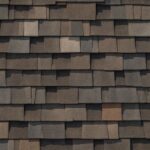
















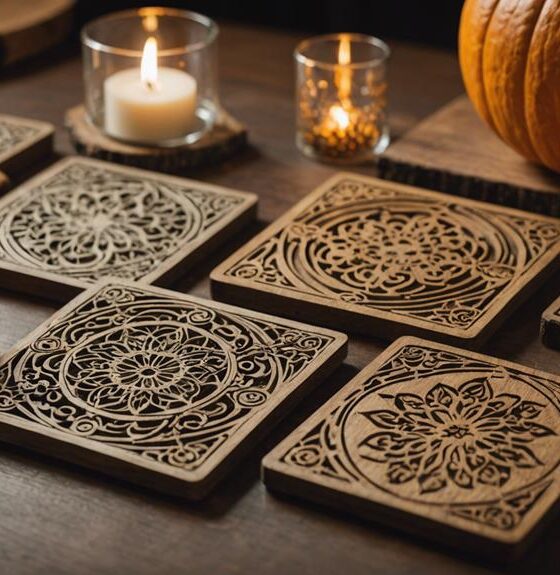
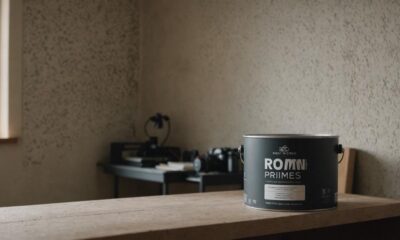




![Best Mop for Laminate Floors: Top Picks for Effective Cleaning [2024] 106 91MTQHTEgAL 1](https://byretreat.com/wp-content/uploads/2023/11/91MTQHTEgAL-1-80x80.jpg)
